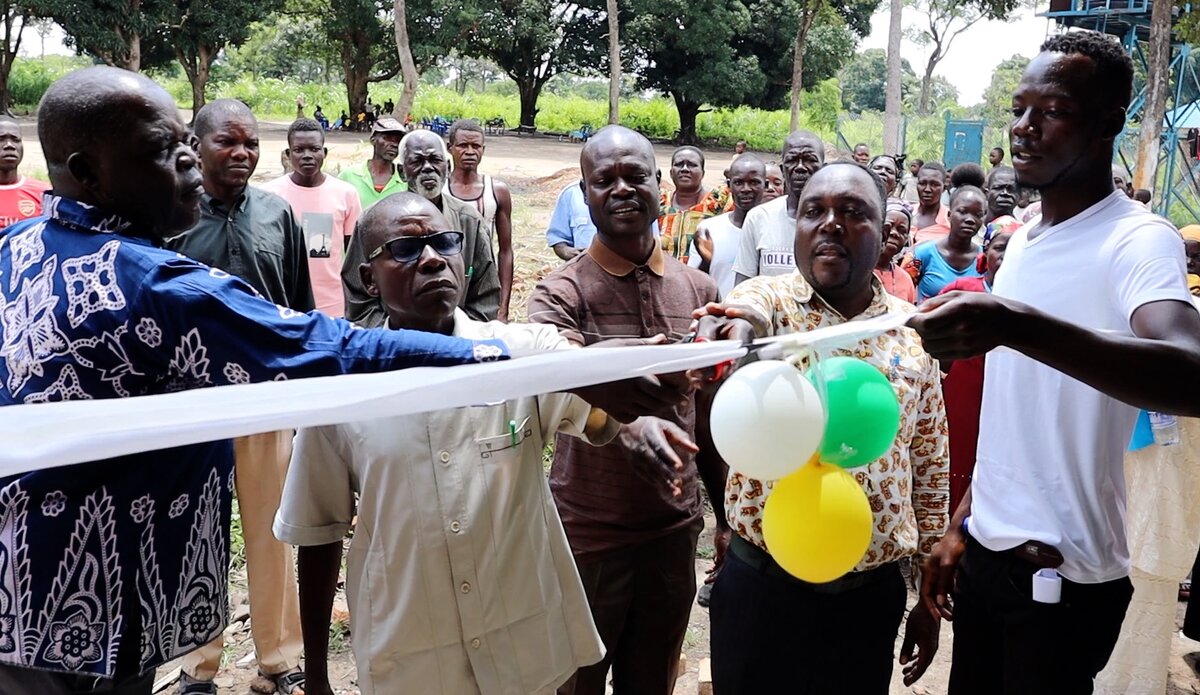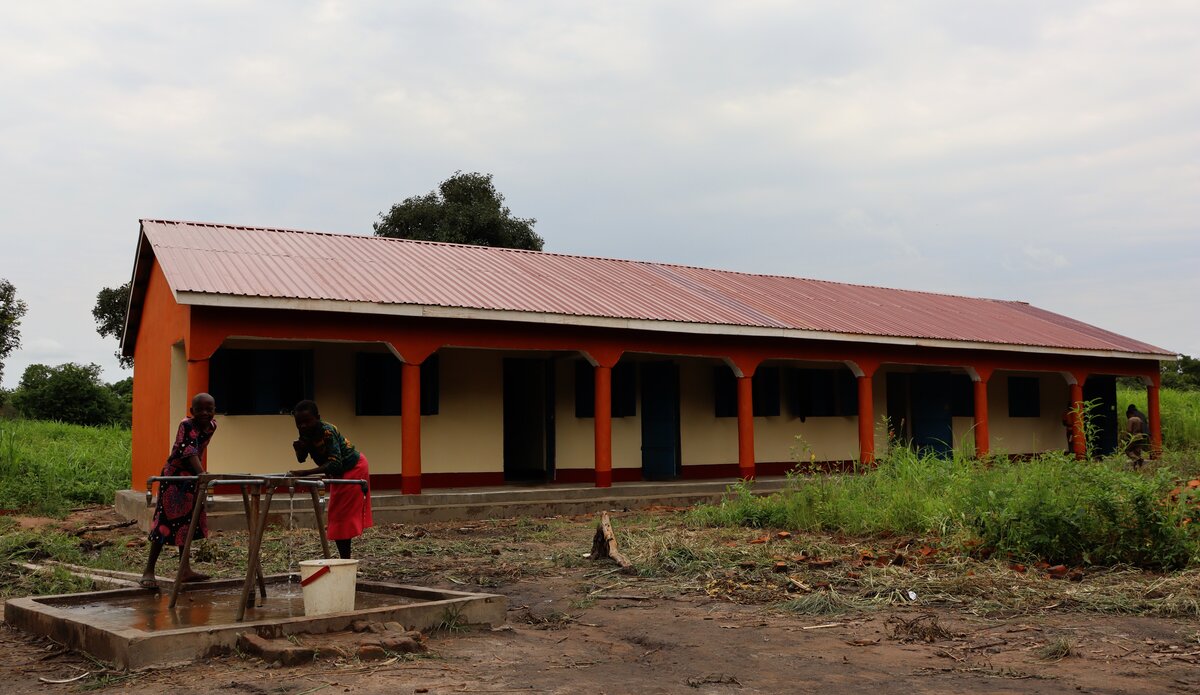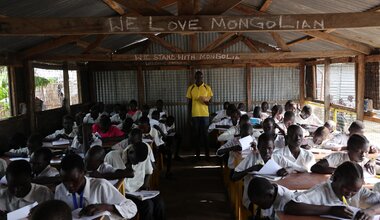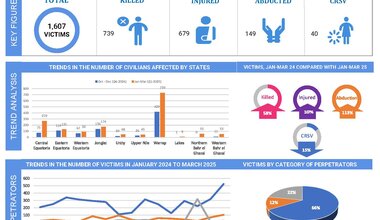UNMISS-funded school gives displaced children in Ezo hope to learn and lead in future
WESTERN EQUATORIA – Under a makeshift, torn shelter, displaced children in Ezo usually gather, to learn from their teachers.
Conflict has taken a heavy toll on them, and they have nowhere else to study. Returning to their original villages is a thought that still strikes fear into their hearts.
Whether under the scorching sun in the dry season or during cloudbursts that mark seasonal rains, children turn up promptly eager to continue their lessons.
Their passion for learning, against all odds, inspired peacekeepers from the United Nations Mission in South Sudan (UNMISS). Patrolling peacekeepers would often speak with them during routine patrols and, seeing their enthusiasm for education, they decided to step in to help.
“We decided to action a Quick Impact Project—a school—here to help displaced people as well as returnees from neighboring countries. We hope this facility will ensure that every child can receive an education,” reveals Thomas Bazawi, a Protection, Transition, and Reintegration Officer working at the UN Peacekeeping mission’s Field Office in Western Equatoria state.
Quick Impact Projects (QIPs) are small-scale, low budget interventions that have a massive impact on making the lives of communities easier.
They are also part of the mission’s push to protect civilians and help build sustained peace across the country.
In Western Equatoria, communities suffered terribly during an outbreak of severe violence in greater Tambura in past years, which forced them to leave their homes to find refuge. Now, with the relative calm, some have voluntarily traced their steps homewards but others are still seeking sanctuary in places like Ezo, facing new challenges such as finding shelters, schools and healthcare.
These new classroom blocks and toilets are designed to boost confidence among displaced children and their parents.
For Harriet Mtungama, an UNMISS Child Protection Officer, this new facility will also address the issue of child recruitment into armed groups.
“This school will go a long way in ensuring that children do not get recruited into armed conflict and instead are situated exactly where they are supposed to be – in classrooms,” she states.
Communities themselves tirelessly joined the construction efforts.
“As mothers we are happy that our children no longer have to study under trees. Earlier, whenever it rained, teachers would have to stop lessons and send children home. Now, that is a thing of the past,” says Lucia Edward, a displaced person.
According to James Kpatago, Ezo county’s Education Director, it is not just children who will benefit from this UNMISS intervention.
“This school is a symbol of peace and the efforts made by our international friend, UNMISS, to protect civilians. This school will benefit both displaced and host communities, promoting education and peacebuilding in the area,” he adds.
Furthermore, Siani Martin, Relief and Rehabilitation Commission coordinator in Ezo county says he believes that the boost in educational infrastructure should encourage voluntary returns and this, in turn, should lead to an increase in school enrolments during the upcoming academic year.
“This facility will be a pull factor encouraging returns from neighboring countries and villages so that displaced people and refugees can begin rebuilding their lives,” he avers.
While challenges remain for the school to function, including additional classroom blocks and salaries for the teachers, the new structure is a worthy step forward towards increasing literacy and, ultimately, employment opportunities for youth.
 UN
UN United Nations Peacekeeping
United Nations Peacekeeping








